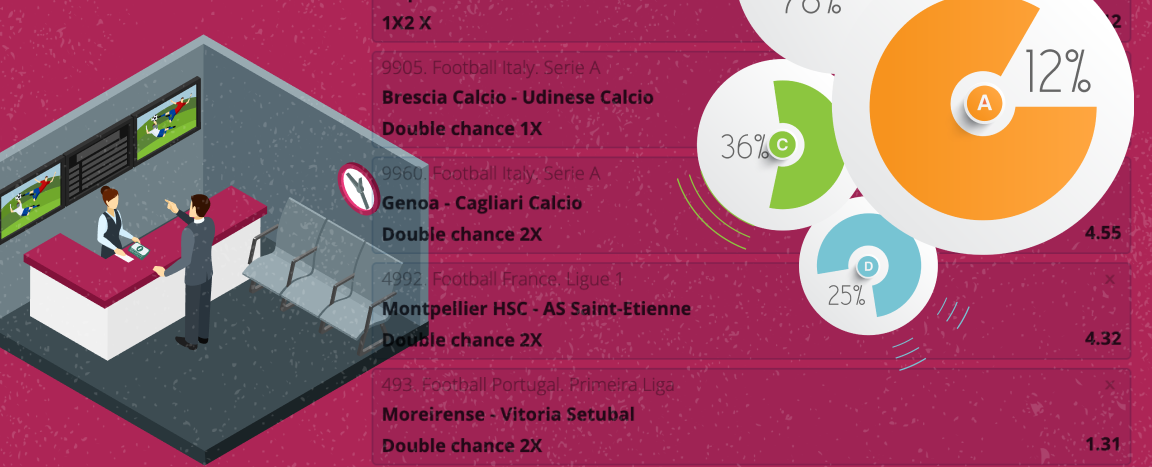
What are they
It makes sense to understand that bookmakers are a business and the aim of most businesses is to make money. Bookmakers are no different. They operate with an aim to create a profit.
The way in which a bookmaker functions is by creating a price or odds for a specific sporting event. The customer then chooses to accept the odds, decide upon a stake and then place a bet. If the bet wins then so does the customer. If the bet loses then the bookmaker takes the money.
How are odds created
Bookmakers need to decide what odds to give their markets. They do this by considering numerous factors. As an example, the bookmakers have the Australian Big Bash cricket match between Hobart Hurricanes and Perth Scorchers to price up. The bookie needs to decide which team is more likely to win the match and price the markets accordingly.
In a similar way to how a punter places a bet, the bookmaker will check factors such as team form, previous results, head to head scores and player involvement such as individual form and injuries. Although these are a good indicator of how a match might be won the bookmaker needs to ensure it has a stronger way of increasing its chances of profiting from bets. They do this by creating what is known as a margin.
How do margins work
A very simple example to explain margins is with a toss of a coin. It can be reasonably assumed that there is a 50 / 50 chance of a bettor guessing the correct outcome.
If the odds were presented fairly on the toss of a coin then they would be even. Or 2.0 on both possible outcomes. If a $10 bet is placed on a coin toss then the bettor will win $10.
The bookmaker cannot operate with odds and outcomes such as this. It would possibly stand to lose a lot of money and as a result, will change the odds to make a toss of a coin type bet more favourable to them, regardless of outcome.
To overcome this the bookmaker will set the odds just above or just below 1.9 for both outcomes of a coin toss. This is called the margin and most bookmakers operate with a margin of around 5% to 6%.
By doing this the bookies are ensuring that they are covering themselves and price the odds that are favourable to them. If bettors really look at odds they will see that the total outcome as a percentage will always be over 100%.
By using the Big Bash example where the Hobart Hurricanes are playing the Perth Scorchers, the bookmakers will price the whole contest in their favour and punters can calculate the margin for themselves with a simple equation;
The bookmakers have set the odds where the Hobart Hurricanes are at 1.40 to win and the Perch Scorchers are at 3.30 to be victorious.
The equation used for this example is: (1 / 1.40) x 100 + (1 / 3.30) x 100 = 71.4 + 30.3 = 101.7%
This swings the balance in the direction of the bookmakers as the percentage outcome is above 100%. This is sometimes referred to as the edge.
This equation can also be applied to the win-draw-win market also known as the 1x2 market. The draw odds are calculated in the same way.
As margins can differ so much, it could be that one bookmaker is more favourable than another. Nevertheless, there are occasions when bookmakers choose not to add a margin and these can be known as a margin-free bet.

Margin-free bets
Bookmakers create margin free bets to encourage customers to place bets on certain markets. It is almost like how shops sell some products at a loss (known as a loss leader). There is an acceptance that the market could inflict a loss however there is a hope that the punter will place more bets, on markets where there is a margin. Bookmakers may also deploy margin-free odds when there has been a rise in the number of stakes for one particular bet.
How can bettors use margins
Punters can place their bets on value odds by working out the bookmakers’ margin. The higher the margin, the more in favour the odds are for the bookmaker. It is quite common for bookmakers margins to be very different so the best way to get an advantage is to ‘shop around’ looking for the most favourable odds; even if they are claiming to have the best in the industry.
Betting exchanges
Some bookmakers offer a betting exchange. This is where customers can bet against each other on occurrence happening which is known as backing and an occurrence not happening which is called a lay. Betting exchange odds tend to be a lot higher than a traditional sportsbook.
Exchanges generally have very little margin and in many cases no margin. The reason being betting customers who win on an exchange pay a commission to the bookmaker.
In conclusion
Betting margins can be difficult for some punters to understand. What customers should realise is that all odds on a sportsbook have been made so that they are mostly in favour of the bookmaker. By understanding a margin and all of the other individual factors that go to create odds, customers will find what they believe to be of value to them.
Add comment
Comments (0)